|
Sep
20
2021
|
|
Posted 4 years 99 days ago ago by Admin
|
|
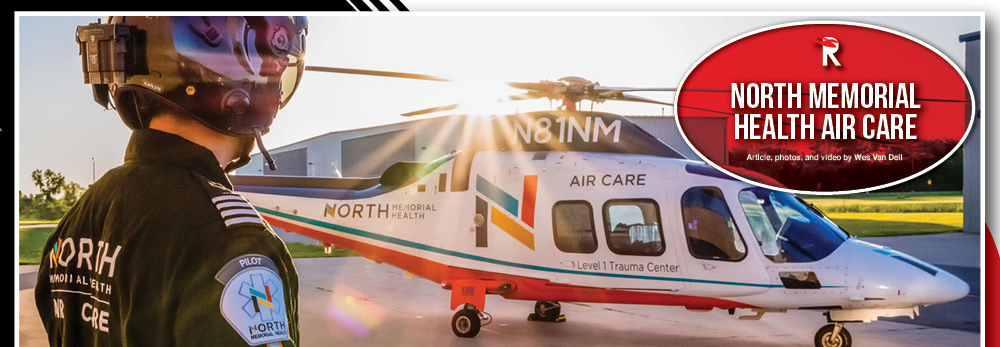
VIEW VIDEO FEATURE
Since 1985, North Memorial Health has served the state of Minnesota and the surrounding states, connecting rural communities and the sprawling metropolis of Minneapolis by both air and ground. North Memorial Health Air Care and its fleet of nine helicopters provides more than 4,000 flights a year from seven bases throughout the region. Their focus is clear: Providing the highest level of care in the shortest time possible to save lives.
Upon meeting the team at North Memorial Health Air Care, one thing becomes immediately evident, a sense of pride and teamwork in what they do. From executives to pilots and paramedics, everyone is invested in the mission and doing their part to serve the community.
The central hub of North Memorial Health is their two hospitals in Robbinsdale and Maple Grove, Minnesota. The Robbinsdale facility is a Level I Adult Trauma Center and has one of the largest helipads in the upper Midwest to accommodate air ambulance flights from across the region. “We’re one of the true hospital owned certificates left.” Says Tate Poyner, Air Care director of operations. “North Air Care has been deeply rooted here for more than 30 years. Having the support of the hospital has given us all the things we need to be industry leaders.” The hospitals themselves service over 100,000 emergency room visits a year, which requires a large network of ground and air transportation assets.
It’s a lot to manage, and the team at North Memorial Health Air Care is up to the challenge. “When you really look at air medical transport, the difference between ground and air is speed. As well as the equipment we carry, we really get people to where they need to be whether that be a trauma center or a heart center as fast as possible.” Says Scott Sampey, vice president of Ambulance Services, which includes the air wing. “The air assets, since we are so spread out across the state, really pulls our whole system together.”
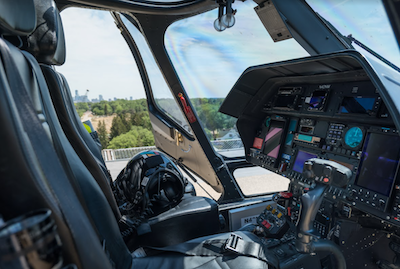
To cover the entire state as well as parts of surrounding states, North’s nine aircraft are stationed across seven bases, six in Minnesota and one in Wisconsin. This means they are deeply involved in each community that they serve, training side-by-side with local first responders, hospital staff, and their own extensive ambulance network. “When North Memorial Air Care comes to that community we stay in that community, and we become a part of that community. We’re committed to the citizens and local first responders. They know that they can trust us to take care of their patients and get them to the most appropriate care.” Says Billie Sell, clinical manager at North Memorial Health Air Care. “When someone is critically ill or critically injured, time matters. The faster we can get them from the rural parts of the state to a Level 1 facility, the better outcome they’re going to have.” That speed comes in the form of the Leonardo AW109.
Speed when it Matters
North Memorial Health Air Care’s fleet is made up of eight Leonardo AW109Ss and one AW109E. The S models are all NVG capable, with the pilots recently adopting white-phosphorus goggles to aid their night missions. “The AW109 is a very fast, very powerful aircraft and perfect for EMS.” Says Poyner ``Our biggest concern is getting the patient to the cities as quickly as possible to get the care that they need.” The AW109 can typically cruise at 160 knots, though greater than 200 knot ground speeds are not uncommon in the typically blustery northern Minnesota winds. That’s a more than 20 knot advantage over similar EMS aircraft in the region and 100 miles per hour faster than ground transportation. That gives them the capability to reach any part of the state within an hour from when the call comes in.

Maintaining a widespread fleet of aircraft also presents its own challenges. Managing that falls to the capable hands of Stephen Latham, Air Care director of maintenance. With nine aircraft at seven bases, he devised a rotation system that keeps all of the bases up and running during scheduled down times. “It’s an ongoing rotation process that is working very well.” Keeping the crews safe and the aircraft in service is his top priority but it’s not without its logistical challenges with such a spread out fleet. “Our two biggest challenges are geographical location and weather.” Reflects Latham, echoing the pilot's feelings about the dynamic Minnesota weather, especially wintertime.
To keep on top of the rapidly changing conditions, North’s pilots need to be proficient in all weather, including frequent IMC that can be found in the Upper Midwest. To aid in IFR proficiency, North Memorial Health Air Care developed their own flight simulator around the hull of a retired 109. “If you don’t come from an IFR background it’s been especially useful to slow things down to the pilot. It’s a really useful tool to break down different phases of IFR flight.” Says Air Care Chief Pilot Michael Slapnicher, who also finds it an invaluable tool for new pilots coming in. “The simulator has been very beneficial in terms of cost savings and given us more focused training with new pilots coming in. It’s a little less intimidating than getting thrown into the actual aircraft.” New pilots will spend several hours in the simulator learning procedures before they ever get in the actual aircraft. It is also available at any time that a pilot needs to work on proficiency, whether it’s for IFR flight or an upcoming check ride. Not only is it useful for pilots, Poyner and Slapnicher are also developing a familiarization course for paramedics to be able to create a survivable situation in the event the pilot becomes incapacitated in flight. Another step to improving the safety of everyone on board the aircraft in a low-risk, low-cost environment.
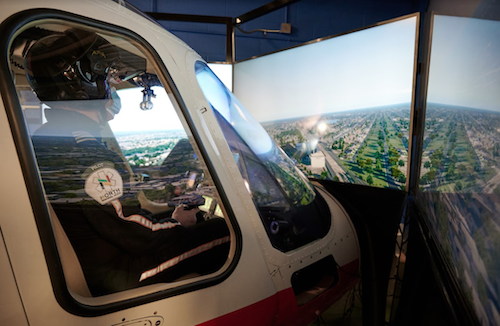
Making a Difference
To Clinical Director Shimon Cohen, the aircraft, pilots, and the paramedics in the back are a dream combination “As we have our trained clinicians, we are able to bring the ER or ICU to the patient and transport them to the large facility to get them the care that they need. With our aircraft and the speed, that makes the difference.”
There are 80 nurses and paramedics in addition to the 30 pilots that are part of North Memorial Health Air Care. Flight crews are 100% advanced-certification clinicians bringing the lifesaving skills to the patient at their time of need. As far as training those crews is concerned, part of that responsibility falls to the expertise of Sell. “They all come knowing how to care for sick patients; they need to learn how to do it in a helicopter,” she says about their rigorous four months of training and qualifications schedule before they are operational on the flight line.
To help the clinicians save lives during that critical transportation phase back to the trauma center, North’s 109s have been outfitted with some unique equipment including fluid warmers and heated blankets to prevent the onset of shock and hypothermia. These active warming measures can be the difference between life and death. “In rural Minnesota they are hours away from a Level I trauma center. We also carry whole blood and packed red blood cells which are lifesaving treatments to those trauma patients.” Says Sell after showing us some of the lifesaving equipment in arms reach of the paramedic in the back of the 109.
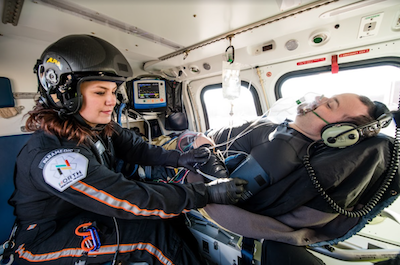
Year of Challenges
In addition to the day-to-day difficulties of helicopter air ambulance operations, this past year has brought its own challenges with the COVID pandemic. This new set of challenges was especially daunting for the crews that faced them every day. “From the very beginning, we took the stance that every patient has COVID,” reflects Sell on the rapidly evolving situation. “Things were changing so fast, so we would have weekly call-ins to help everyone keep up to date and supported. Their safety is in our best interest,” she says. Safety measures were established, including flying in full PPE and a Tiger mask, a unique mask system to protect the crews but also enable radio communication. “I’m happy to say we had zero COVID infections for any pilots throughout the pandemic.” Poyner adds.
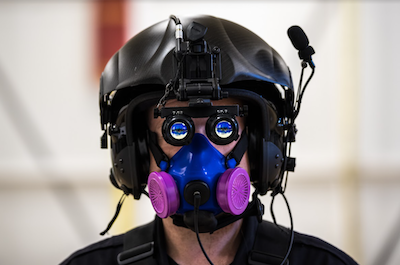
Keeping crews safe also meant keeping up proficiency and morale, which fell to Slapnicher. “We had to get real creative with keeping all our pilots up and employed.” He reflects on having to temporarily close bases that saw a dramatic downturn in activity due to the pandemic. He was able to balance that by changing schedules at the other bases to help account for the increasing delays and uncertainty on the ground. “Duty days got really strange. Typically, when you fly to a hospital you’d have a 15-20 minute turnaround and now it was an hour and a half. It was difficult to plan flights around COVID,” he states. The aircraft were also disinfected with UV lights after every call. This required more pilots on hand to manage the increased down time during a shift and reduce the fatigue of crews during the height of the pandemic. All of those measures were effective to keep his crews alert, informed, and ready when the community needed them. “And we didn’t have to let anyone go, which is great,” he adds with a smile.
Learning Experience
Although the pandemic is not fully behind us, the team at North Memorial Health Air Care are keen to learn from the experience “We can change really fast if we have to when it comes to the safety of our team members. That’s one of the biggest things we’ve learned from the COVID pandemic.” Says Sell. “We’ve learned to be flexible, we’ve learned to be creative, and I think it’s made us better all in all.” Slapnicher adds. The whole team also believes that the experience has also brought them together in unforeseen ways. “We really embraced video meeting opportunities and that’s helped us stay connected to our staff throughout the system. We’ve been holding weekly pilot meetings so everyone is getting the same message for standardization. We can improve on communication through technology and we’re at the point where we’ve had the best communication we’ve ever had. That’s a huge takeaway that we’ve learned from the COVID pandemic,” reflects Poyner on his experience over the past year.
Medicine is also evolving at a very rapid pace beyond the pandemic, and the future looks bright for medical transport. “As medicine continues to change, so does medical care in the helicopter. Expanding our clinical care capabilities and bringing that ICU-level care to our patients in the field is really how air medical will expand.” says Sell. It’s a sentiment with which Cohen agrees, “You’re going to have a larger need for mobile integrated health. A lot of smaller facilities in rural communities are closing down, so there is a greater need for emergency transport in those communities.” That means reliable, safe, and fast transportation. North Memorial Health Air Care is ready to step up to the challenge.
